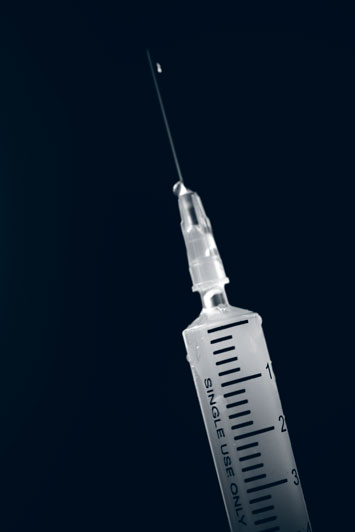How to Make a Dangerous Drug Even More Deadly: Common Contaminants in Heroin
Over 15,400 deaths occurred in 2015 due to heroin overdose, and numbers continue to rise. Heroin is cheap, easy to acquire and in abundant supply. It is an opioid drug derived from morphine. It can be injected, sniffed, or smoked and hits the opioid receptors in the brain very quickly to give users a rush of euphoria. It is also deadly, even more so when contaminated with chemicals, metals or other contaminants.
Heroin is not just a drug for street people. The insidious siren call can still be heard after many years of sobriety. Many well-known people with plenty of money to acquire any drug have fallen victim to it. Phillip Seymour Hoffman, was a dedicated family man, Oscar-winning actor and former heroin addict who had been sober for over 20 years when he was found dead of an overdose of heroin mixed with several other drugs in 2014.

Other Drugs
Mixing other drugs with heroin has become commonplace and is referred to as “cutting”. Fentanyl, an opioid pain reliever, is 100 times stronger than morphine. It has also been linked to many overdose deaths from home-made fentanyl that was added to heroin, sometimes without the knowledge of the user. In only one year, deaths from illegally made fentanyl increased by almost 50%. The CDC has reported that the number of heroin deaths is growing due to the combination with fentanyl.
Antidepressants or benzodiazepines have also been combined with heroin in recent years to a fatal end. Antidepressants like Ativan, Klonapin or Xanax are sometimes used to treat alcohol addiction and are addictive by themselves. When combined with opioids, it can become deadly as both opioids and benzodiazepines can depress the central nervous system causing respiratory failure. Unfortunately, when addicts are taking one drug like an antidepressant, they may unwittingly overdose when they later use heroin.
Heroin mixed with cocaine or methamphetamine is known as speedball. It is attractive to users who are looking for an intense high. The stimulant counteracts the depressive effects of the opioid, which sometimes makes it difficult to determine that an opioid overdose is happening. Since a high produced from methamphetamine use lasts much longer than heroin, respiration and heart rates can skyrocket once the heroin wears off. Here is an article if you want to learn more about what heroin is cut with.
Miscellaneous Powders
There are many other common heroin adulterants. From dried milk to “Rizzy powder,” a toxic substance used to color plants, and from talcum powder to laundry detergent, contaminated heroin can have anything added to increase their profit. Corn starch, crushed painkillers and rat poison have also been found to be mixed into heroin. Besides causing illness or even death, these substances have been linked to a condition where the skin of the users’ arms turns black with necrosis.
Toxic Metals and Bacteria
Another unpleasant surprise ingredient in black tar heroin is dirt. The soil has been found to contain spores that are related to the same bacteria that causes botulism, a potentially deadly form of food poisoning. When injected, this bacteria can cause severe infection and may halt breathing, causing death. Using overdose treatments will not help counteract the bacteria’s effects.
When users burn heroin on a piece of aluminum foil to breathe the fumes, it is called “chasing the dragon.” Addicts have been found to have elevated levels of aluminum in their urine from the use of heroin in this manner. Aluminum acts as a neurotoxin in the body. Alzheimer’s disease has also been speculated to be related to exposure to aluminum, although it has not been proven yet.
If you or a family member is suffering and could benefit from treatment for heroin addiction, help is available. Call Clean Recovery Centers at 1.888.330.2532 now. Find out how you can recover and live a joyful life without drugs.
Sources
- https://nida.nih.gov/research-topics/trends-statistics/overdose-death-rates
- https://www.nytimes.com/2014/02/03/movies/philip-seymour-hoffman-actor-dies-at-46.html
- https://www.healthline.com/health/addiction-drug-problem-benzos#4
- https://www.ncbi.nlm.nih.gov/pmc/articles/PMC6666922/
- https://www.verywellmind.com/what-is-in-heroin-22048


